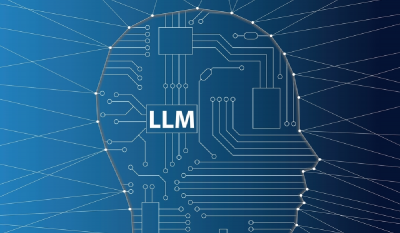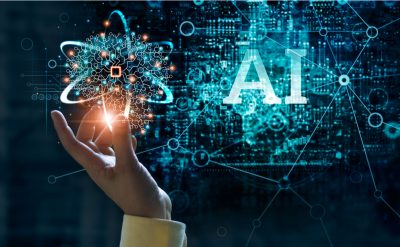The line separating truth from fiction is becoming increasingly hazy in the age we find ourselves in! We’re getting even closer to that point thanks to the new technology known as ‘Metaverse’, whose specifics have not yet been established. But what is Metaverse exactly?
The Metaverse is an innovative transformation of the internet into a community of individuals inhabiting ongoing digital environments to earn a living, communicate, have experiences, and claim ownership of their shared and individual digital estates and assets. Metaverse combines a variety of already-existing technologies and aims to offer a virtual reflection of reality.
The users can personalize their avatars, trade artifacts, shop, chat, and play games in this 3D virtual environment. It might also be a virtual environment where people can explore new places, purchase, and sell digital real estate, create non-fungible tokens, experience live concerts, and even take onboarding classes for the new employees!!
This digital reality can feature a wide range of settings and locations, such as cities, parks, shopping centers, nightclubs, or the conference room at your place of employment.
There are diverse metaverses now, which are accessible in various ways and are on multiple platforms. Numerous expensive AR and VR devices and goggles, websites, software, gaming platforms and cryptocurrency platforms are examples of the common access points.
Some real examples include attending a 3D work meeting through Microsoft Mesh or playing poker in Decentraland.
Yes! As Augmented Reality (AR), Virtual Reality (VR), the Internet of Things (IoT), 5G, Blockchain, Cloud Computing technologies and the Metaverse progress, more personalized and intensely collaborative interactions are the new normal.
Growing Concerns of the Current IT Infrastructures
The broader concern, though, is whether the present IT infrastructures of modern businesses are prepared and well-equipped to fully utilize the Metaverse’s potential. Well, the answer to this question is still a big “NO” today.
Until now, most firms have centered their IT modernization efforts primarily on providing efficient remote work capabilities. While this was particularly important in the pandemic and post-pandemic world, being prepared for remote labor does not provide the necessary framework for firms to operate in the Metaverse.
Why is IT modernization important for Metaverse?
It’s not a question of whether the Metaverse will arrive; it’s a question of when, especially with the new technologies being produced daily and the big-name firms spending money on the ideation.
The Metaverse won’t likely be fully ready for another ten years, but business owners should keep up with the times as technology develops. Here’s what they can do in this context.
Decentralize the core for better flexibility

The Metaverse is a brand-new universe with unexplored possibilities, but it is not without its complex issues. To transition to Web3, which is built on the principles of decentralization and community ownership; custodians and leaders of IT must adopt agile, transparent, highly automated working practices and rely on elastic infrastructures that make this possible.
Users on the Metaverse want to build, buy, and take part in experiences that are only limited by human imagination. Building complex cloud infrastructure and vast server capacity exclusively for the CIOs and their teams will no longer benefit businesses. Every user in the Metaverse is a live, active creator who responds instantly to community demands.
These users collaborate without being bound by the highly centralized, monolithic platforms and regulations to build naturally interoperable, massively data-rich, scalable creative economies that add more value than the individual pieces.
Getting ready to build and use connected landscapes
Because of the strength of cloud and edge computing; digital twins, mixed reality and autonomous systems are combining; opening a whole new world of business possibilities. Businesses are investigating on how to give value to customers when live, data-rich digital twins of physical settings are combined with the actual world in mixed reality. This entails using data analytics and simulation to transform and drive autonomous decisions, actions, and interactions.
Soon, IT infrastructure with interconnected and seamless stacks that integrate Artificial Intelligence (AI) and Machine Learning (ML) platforms that enable the creation of autonomous systems and a frontend with hardware that allows immersive and practical mixed reality – will become the norm. This will act as the foundation for Metaverse apps that result from the combination of the intelligent cloud and intelligent edge, supported by digital twins, which every organization will start to use to transform themselves radically.
Protect against a new wave of cybercrimes by modernizing IT
The Metaverse will bring security and privacy concerns – arising from sensors collecting data, linked technology and the as-yet unregulated and emerging sectors of crypto and NFTs, in addition to the hacking, phishing and malware threats with widespread digitalization.
A modern IT landscape as a foundation is necessary to up the ante regarding data security, identity management and compliance with new laws and regulations – or they risk having malicious actors sabotage the inadequately secured organization. As businesses explore the Metaverse, maintaining cyber resilience will be essential.
Key technologies of Metaverse to help modernize your business

Virtual Reality (VR) and Augmented Reality (AR) technologies are frequently used to define the metaverse, although metaverse development goes beyond these two fundamental technologies. Let’s dive deep into them.
Blockchain
Centralized metaverses are possible, such as the ones by Facebook and Microsoft. However, the centralized idea of the metaverse is intended to be replaced with a strong and decentralized infrastructure, thanks to blockchain technology and its use cases like NFTs and cryptos.
Blockchain is also essential to the growth of the metaverse since decentralization is a key component of Web 3.0, the next generation of the web. Therefore, even metaverse initiatives must be developed as decentralized platforms to support a decentralized web. Blockchain technology can provide decentralized components to metaverse initiatives including smart contracts, storage, security, trust, and interoperability.
With the aid of NFTs, cryptocurrencies, and self-identity authentication, blockchain can be used in a variety of ways to create and manage metaverse initiatives.
AR and VR technology
The entry point to the metaverse is Augmented Reality (AR) and Virtual Reality (VR). Users of virtual reality technology enjoy a linked experience in the metaverse, which is continually evolving and improving the Metaverse’s capacity to offer engrossing and immersive 3D experiences.
However, AR broadens the application of VR. For instance, brands can only provide a virtual version of the automobiles inside the store that is accessible in the metaverse using VR. However, AR enables potential purchasers to test drive a car virtually before making a purchase.
Artificial Intelligence (AI)
Another significant factor driving the growth of the metaverse is artificial intelligence. Businesses can replace human activities with automated, computer-controlled ones by deploying AI. Fast computing, identity verification via facial recognition, analytics, and scaling better techniques are the most often used applications of AI for enterprises. Regarding the employment of AI in the metaverse, it enables the creation of 2D and 3D based avatars based on the unique traits of users.
Users of various languages are now able to explore the possibilities of the metaverse and take use of its advantages thanks to the application of AI to language processing on the metaverse.
3D Reconstruction
The metaverse should provide realistic virtual settings created using 3D reconstruction technology because it represents the real world. By following the fundamental rules of physics and science, this technology enables the development of photorealistic things like buildings, a high-definition 3D environment, and actual locations inside the metaverse.
Using virtual tours, businesses can assist prospective clients in viewing a property, evaluating it, and purchasing it for real estate. Like this, online retailers have opened virtual shops where customers may browse products and decide wisely. For instance, a clothes company might provide showrooms and changing areas that imitate real shops.
Internet of Things (IoT)
IoT is a technology that connects the physical world with the internet by using sensors and other devices. IoT improves the connection between tangible objects or devices in the physical world and the metaverse.
IoT also gives the metaverse access to real-time information gathered from the outside world. By making use of such information, the metaverse can improve the veracity of the events taking place in its virtual world and make them pertinent to the circumstances or environment in the actual world.
The production of real-time simulations in the metaverse is made possible using IoT, which may symbiotically connect the 3D environment to numerous real-world devices. IoT can combine with AI and machine learning technologies and efficiently manage the data for future metaverse optimization.
5G and Edge Computing
Edge computing enables faster data flow with less delays and helps make experiences more seamless. It is typically employed in commercial settings. As computers must be able to manage the high stimulations with efficiency to eliminate lag and ensure that users have an immersive and lag-free gaming experience, it is one of the key reasons that have made the metaverse possible.
Access to 5G networks is a significant characteristic that is frequently paired with edge computing. More people will be able to access the metaverse from their computers and other devices without experiencing any network lag as 5G becomes more widely deployed and more reasonably priced.
Enterprises and organizations must go beyond their current preparedness for remote work and gain knowledge of other digital technologies. These technologies can make Metaverse genuinely “bigger than life,” as many tech leaders had always hoped – when coupled in different ways.
Beyond Modernizing
The key to the Metaverse is the experience economy
Most industries are currently undergoing digital transformation. Digitalization has ushered in a new paradigm in which emotions and experiences influence economic relationships. What businesses need to understand is customers are now looking for engaging experiences.
People in the experience economy do not simply buy and sell products, services, or features. They also want the experiences and emotions associated with them. People may pay large sums in the Metaverse for intangible items that provide social meaning and relevant experiences.
Deliver added value
Concentrating solely on providing clients with the most value is insufficient for genuine success. By being convenient, having a robust product design, delivering on social cues or even supporting humanitarian causes like stopping global warming, businesses add value and strive to meet client needs better.
It’s not enough to deploy cutting-edge technology for a business to prosper in the digital age and afterward in the Metaverse. Your customers need additional value!
One significant issue is that most business owners believe attractive “packing” for a good or service is the designer’s goal. To offer competitive value, all design efforts should be concentrated on developing a consumer experience rather than just packaging.
Conclusion
Companies that can create an agile, flexible core and readily integrate everything digital and emerging will succeed. They will also be able to introduce new experiences by utilizing this cutting-edge technology. The transformation can only be met with solid IT basics and a well-planned strategy for technology evolution.
Depending on its conditions and use case, a business can choose a different IT modernization strategy. Modernizing IT is a requirement for digital reinvention that is metaverse-ready. However, the ultimate objective of such IT modernization activities should be to provide highly customized, virtually lifelike, and extraordinarily collaborative interactions.
One thing is certain, however: Metaverse is prepared to redraw the lines between what is considered real and what is “something incredibly near to reality.” Switching through the Metaverse won’t be possible without IT Modernization; that much is certain.














